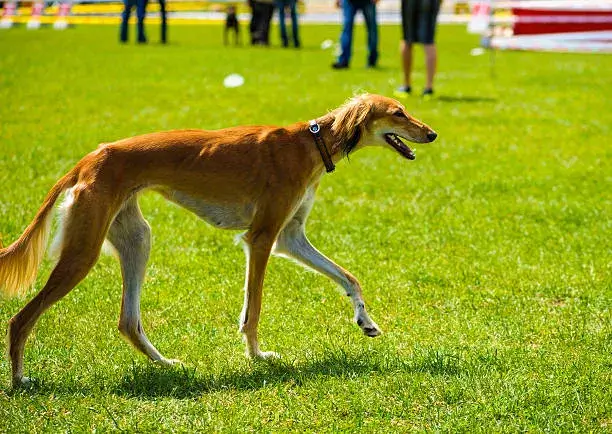Pacing (also called the camel walk) is usually a not very common gait for dogs. It often is a sign of fatigue or physical weakness. Overweight dogs or dog with a condition have a tendency to pace rather than trotting.
What does it mean if your dog walks weirdly?
An abnormal gait can be due to a wide array of underlying problems or conditions. These can be as simple as a recent trauma or a thorn in the pad, to issues stemming from the central nervous system, musculoskeletal system and even cancers.
Why is my dog walking with his body curved?
Your dog may move forward at a slight angle or slight C-shape in its back with the left or the right shoulder slightly in the lead. That is very normal and is due to the way the dog developed its most dominant pair of legs. It is similar to being right-handed or left-handed in humans.
Why does my dog pace like a horse?
The pace is uncommon among domestic quadrupeds, but it is a good endurance gait. Dogs and other domestic animals generally pace because of fatigue or a physical weakness. Dogs that are obese or out of condition often pace rather than trot.
What are the 4 gaits of a dog?
Normal Canine Gait: In dogs, there are 4 main gaits: walk, trot, canter, and gallop (Table 1). Horses use these same 4 gaits; however, dogs have 2 different ways of cantering and 2 different ways of galloping.
What are signs of hip dysplasia in dogs?
Weakness and pain in the hind legs are the usual clinical signs. The dog appears wobbly and is reluctant to rise from a sitting or lying position. Some dogs will limp or be reluctant to climb stairs. These signs can be seen in puppies as early as a few months old but are most common in dogs one to two years of age.
What does wobblers syndrome look like?
Dogs with wobbler syndrome typically have a “wobbly” gait mostly in the back end (thus the name “wobblers”). This wobbly gait may only be visible in slippery floors and when the dog walks slowly. They may walk with their head down, which is usually a sign of pain.
What are vestibular signs in a dog?
Common signs of vestibular syndrome in dogs and cats include falling, head tilt (rotation of the head with one ear held lower than the other), flickering of the eyeball from side-to-side or up and down (nystagmus), general wobbliness (often with the animal drifting to one side as he moves around) and/or circling.
What does knuckling mean in dogs?
Knuckling is when a dog walks on the top of its feet instead of its paws. Pups can knuckle on just one leg or all four of them, and they may not do this with every step they take. Your puppy may be knuckling under, on a front paw, or back paw.
Why does my dog run like a deer?
Zoomies are a natural dog behavior that is most often no cause for alarm, so long as your pup has room to run without injuring themselves. However, constant zoomies may be a sign of a larger behavioral problem, so its a good idea to keep tabs on how often your dog is zooming and for what reasons.
What are the symptoms of doggie dementia?
- Disorientation and confusion – Appearing lost or confused in familiar surroundings.
- Anxiety.
- Failing to remember routines and previously learned training or house rules.
- No longer responding to their name or familiar commands.
- Extreme irritability.
- Decreased desire to play.
Is pace gait bad for dogs?
A dog pacing all the time, however, is inefficient because the dog’s center of gravity continuously shift from side to side, and the dog has to expend energy to re-center its weight. This is a waste of energy and keeps a dog from responding quickly if she needs break into a run.
Do different dog breeds walk differently?
The Same But Different: A well-bred dog will move soundly, but correct movement differs from breed to breed.
What is goose-stepping in dogs?
Assuming that a dog isn’t suffering from a cerebellar disorder or other malady, a dog that exaggerates the lifting of its forelegs is said to be “goose-stepping.”
How does a dog with hip dysplasia walk?
Dogs who have hip dysplasia may sway back and forth when they walk. They may also have a bunny-hopping gait or may stand flat on their back feet. All of these potential gait issues are related to the pain they feel when they suffer from hip dysplasia.
How do I tell if my dog is in pain?
General behaviour: Shaking, flattened ears, low posture, aggression, grumpy temperament, panting or crying, excessive licking or scratching a specific area, reluctant to play, interact or exercise, lameness (limping), stiffness after rest, loss of appetite.
How can I improve my dogs gait?
Adopt a clicker and reward system that lets your dog know when they are gaiting properly. Then, train your dog to gait in the way you wish, starting without a leash and then moving over to leash training when they improve.

